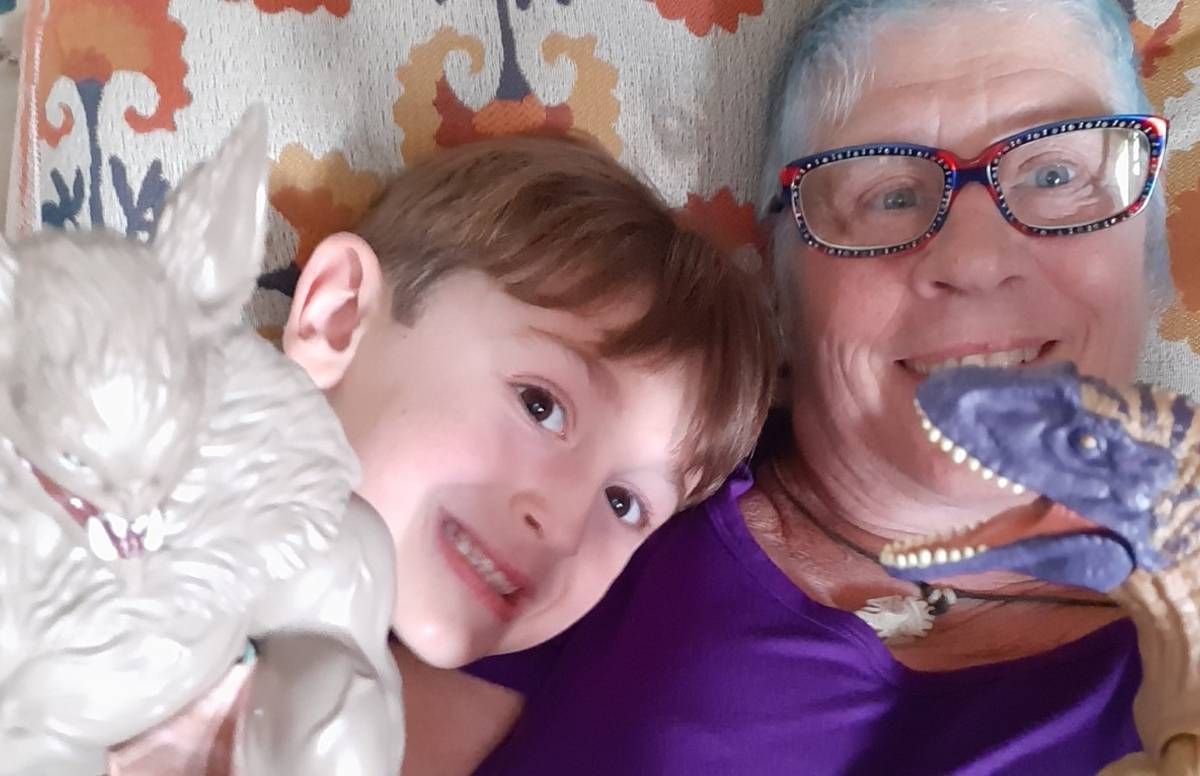When Trauma Leads to Growth
Posttraumatic Growth, or PTG, can lead to rich and unanticipated rewards
Thirty years ago, Joyce Mikal-Flynn, a family nurse practitioner and triathlete, survived a near-death experience at the bottom of a 13-foot-deep swimming pool. After 22 minutes of CPR, a helicopter ride to the hospital during which her heart stopped again and weeks on a ventilator, she underwent months of recovery and rehabilitation. Finally, she returned to school, doing doctoral research focused on enhanced survivorship, resilience and growth after trauma.


Now, Mikal-Flynn, 65, is an author, marathoner, professor at the School of Nursing at Sacramento State University in California and creator of a recovery and rehab system called MetaHabilitation ©, used in Canada and Italy as well as the United States.
“Human beings possess the ability to adapt and ultimately become stronger when faced with severe disruption or damage to their homeostasis,” said Mikal-Flynn. “Metahabilitation recognizes each person’s inherent capacity to move forward not in spite of the trauma, but as a direct result of it."
PTG not PTSD
The concept of Posttraumatic Growth, or PTG, was developed in the 1990s by psychologist Richard G. Tedeschi, now distinguished chair of the Boulder Crest Institute for Posttraumatic Growth in Bluemont, Va., and his colleague Lawrence Calhoun.
It’s different from PTSD, or Post Traumatic Stress Disorder, a constellation of psychological and often physical symptoms experienced after profoundly upsetting events such as a natural disaster, an assault or a terrible illness. Posttraumatic growth can be the reward for pain and suffering, a positive ending which can lead to rich and unanticipated rewards in terms of emotional, social and even spiritual health.
“Growth in even one area can have a profound effect on a person’s life."
In the aftermath of a traumatic experience, Tedeschi says, posttraumatic growth eventually allows people to find meaning in the suffering. For some, it may even trigger an existential crisis.
Posttraumatic growth differs from resilience, Tedeschi explains.

“Individuals who are naturally resilient tend not to experience posttraumatic growth. It is as if they are inoculated against trauma, rather than being transformed by it,” he notes.
People who experience major difficulties, including symptoms of PTSD such as flashbacks, nightmares and severe anxiety, are often the ones who experience the greatest transformation.
Growth After Trauma
The Posttraumatic Growth Inventory, developed by Tedeschi and Calhoun, is used to evaluate how someone has changed after a traumatic experience. Five significant areas of growth can ensue:
- Greater appreciation of life
- Enhanced relationships with others
- Heightened sense of personal strength
- Spiritual growth
- Greater awareness of possibilities in life
“Growth in even one area can have a profound effect on a person’s life,” says Tedeschi.
Internal changes in perception, self-awareness and one’s sense of competence often lead to positive actions. Trauma survivors of any age may switch careers, find intensely rewarding hobbies, go back to school or take early retirement and travel.
Although posttraumatic growth often happens naturally, says Tedeschi, it can be facilitated in five ways:
- Learning the ways trauma can lead to a disruption of core belief systems
- Developing emotional regulation skills which allow you to manage negative emotions such as anxiety, guilt and anger
- Talking about the trauma and how you have been personally affected by it
- Producing an authentic narrative about the trauma and our lives afterward so you can accept the reality and envision moving on
- Providing service to others who experienced similar or different traumatic events
A Silver Lining in the Pandemic
Sandie Butler, a 69-year-old retired teacher and mixed media artist from Hawthorne, N.J., has experienced a number of challenging events throughout her life, including growing up in an abusive home, struggling with substance abuse and experiencing the murder of her oldest sister. After that horrific loss, she became sober, went to college at age 36 and got a job she loved as an art and photography teacher for students with learning disabilities.
Several years ago, her daughter and son-in-law planned a move to Florida due to a job transfer. Seeing Butler’s face crumble at the thought of her beloved grandson Mason leaving, her daughter reassured her that they wanted her to join them.
Quitting her job was heartbreaking. Butler gave up her wonderful apartment and moved into her daughter’s house to save money before the move. The transfer kept getting postponed, until one terrible day her son-in-law told her that his firm had laid off 1,700 employees, including him. The move was off.
"Cementing my already amazing bond with him has been the silver lining of this very difficult time.”
Butler was devastated. She had retired and given up her home only because of the impending relocation. Now, she had no job, needed to find a place of her own and cobble together a new life. Meanwhile, she and Mason spent many happy hours together, having all kinds of adventures.
When Mason started school full time, Butler found her own apartment nearby so she could pick him up every afternoon. Turning her living room into a small artist’s studio, she formed her own company, teaching encaustic art [hot wax painting] and papermaking. She made and sold art, lots of art. Life was good.
And then, COVID-19 hit.
“It was clear that I was meant to homeschool Mason,” Butler says. “Teaching him, watching him grow and develop and cementing my already amazing bond with him has been the silver lining of this very difficult time.”
New Beginnings
What will our landscape look like in the post-pandemic period? What good can possibly come from this devastating crisis? How will we ever come back from the massive unemployment, the worldwide economic downturn and the unimaginable illnesses, deaths and losses?
Tedeschi notes that personal and collective tragedies can frequently spur positive changes which may include the exploration of new possibilities, increased intimacy with others and a greater appreciation for life.
“Despite the misery resulting from the coronavirus outbreak," Tedeschi says, "many of us can expect to develop in surprising and beneficial ways in its aftermath.”


